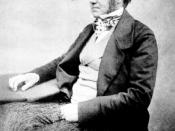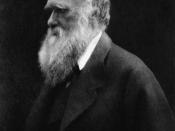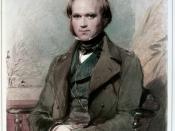Evolution is defined as a gradual process in which something changes into a different and usually more complex or better form. In the 1700s, naturalists, Comte de Buffon and Baron Cuvier concluded with the studies of fossils and comparative anatomy that life on earth had endured many changes through a long period of time. In the early 1800s, another naturalist named Lamark, proposed the first complete theory of evolution. He observed through is observations, depending on the extent to which the use of the structure, that an animal's body structure is able to change during its life span. He also noticed that organs and muscles, which were used often, tended to become larger and stronger. On the contrary, the organs and muscles, which were used seldom, tended to become smaller and diminish. With these observations, Lamarck concluded that these characteristics were hereditary. The Theory of modern and most popular theory evolution was proposed by a 19th century Scientist names Charles Darwin.
Charles's theory stated that life evolved on earth over millions of years and spawned from a few common ancestors. Individual organisms do not evolve; they keep the same genes throughout their life. Evolution occurs when the ratio of different genetic types is changing. Each individual organism within a population does not change. Larger changes, such as when a new species is formed, are called macroevolution. Microevolution is Evolution resulting from a succession of relatively small genetic variations that often cause the formation of new subspecies.
One theory of evolution is described as follows approximately seven-hundred or eight-hundred million years ago life was first known on this planet in the form of single-celled organisms called procaryotes .Over time these unicellular organisms evolved into an array of adaptive types. Scientists think that many eucaryotes may have evolved through the banding together...


